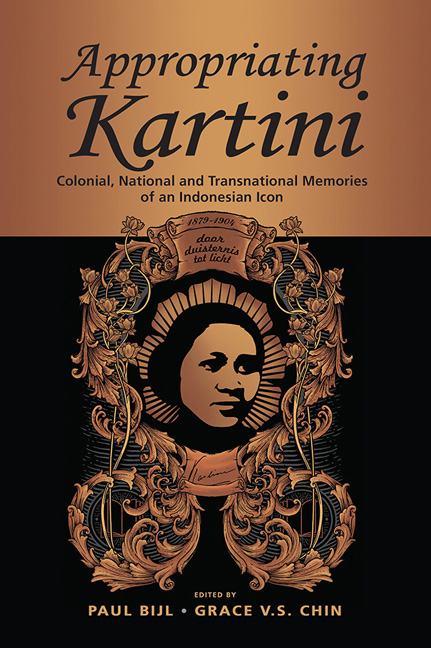Book contents
- Frontmatter
- Contents
- Acknowledgments
- The Contributors
- 1 Introduction
- 2 Crafting Reform: Kartini and the Imperial Imagination, 1898–1911
- 3 Hierarchies of Humanity: Kartini in America and at UNESCO
- 4 Ambivalent Narration: Kartini’s Silence and the Other Woman
- 5 Unpacking a National Heroine: Two Kartinis and Their People 103
- 6 Call me Kartini? Kartini as a Floating Signifier in Indonesian History
- 7 Kartini and the Politics of European Multiculturalism
- 8 Afterword
- Index
8 - Afterword
Published online by Cambridge University Press: 02 April 2020
- Frontmatter
- Contents
- Acknowledgments
- The Contributors
- 1 Introduction
- 2 Crafting Reform: Kartini and the Imperial Imagination, 1898–1911
- 3 Hierarchies of Humanity: Kartini in America and at UNESCO
- 4 Ambivalent Narration: Kartini’s Silence and the Other Woman
- 5 Unpacking a National Heroine: Two Kartinis and Their People 103
- 6 Call me Kartini? Kartini as a Floating Signifier in Indonesian History
- 7 Kartini and the Politics of European Multiculturalism
- 8 Afterword
- Index
Summary
The contributors to this volume deliver us a striking paradox. Internationally, Kartini ranks just after Anne Frank as the best known of authors who wrote in the Dutch language. But in the Netherlands today she is barely known or read. In Indonesia, Kartini is barely read but widely known. Kartini has a rich afterlife in hundreds of articles, speeches and exhibitions. UNESCO sponsored translations into English and French of some of her letters for its Collection of Representative Works of world literature. She is the heroine of at least two feature-length films. A national day is dedicated to her in Indonesia when her name is invoked in recognition of women's achievements. All this while, the letters she wrote and by which she was launched into transnational consciousness remain largely unread.
What we have here, as this book makes very clear, is that the historical personage has transmogrified into a reference point in discussions, debates and controversies on big topics. Kartini's name is invoked in studies of colonialism, racism, political ideologies, religion, gender, equality, human rights and women's emancipation. In specifically Indonesian contexts, her name is invoked in conversations on girls’ education and careers.
Now, this is a very heavy burden to lay on the shoulders of one who lived a mere twenty-five years and six months. The years of Kartini's life that are part of the written record are 1898–1904. Within this short time span, if we read her letters we discover passage from a young girl's excitement at venturing upon the modern age, the noble ideals and dreams of the precocious, the transport of affections for new-found friends, energetic efforts to raise pride in Javanese culture, and the hope of forming ties with like-minded young people in Java. There is also maturation, ambitions adapted to meet changed circumstances, and then a life cut short just days after giving birth to her only child. Had Kartini been given a longer life we would perhaps have traced evolution in ideas and principles and achievement of goals. Over the decades since her death, commentators have analysed Kartini according to the sensibilities of their own historical time and priorities. And they have necessarily found the heroine wanting.
- Type
- Chapter
- Information
- Appropriating KartiniColonial, National and Transnational Memories of an Indonesian Icon, pp. 175 - 190Publisher: ISEAS–Yusof Ishak InstitutePrint publication year: 2020

